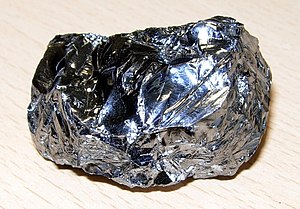By Steve Farrar, Science Correspondent
Life forms so alien that scientists may simply not have recognized evidence of their existence could inhabit the Earth, according to a leading scientist.
Dr. Tom Gold, emeritus professor of astronomy at Cornell University in America, believes that organisms based on silicon – completely unrelated to all the carbon-based life man has encountered so far – may live at great depths.
In a forthcoming book, he will suggest that scientists should take the possibility more seriously. Gold, who is a member of the Royal Society, previously predicted that vast amounts of more conventional bacteria live miles down within the Earth’s crust.
Scientists initially dismissed the idea, but many now agree with him.
“So long as nobody suspects there could be silicon-based life, we may just not be clever enough to identify it,” he said last week.
Rocks bearing signs of silicon-based organisms may already be sitting in laboratories, he believes, with their significance overlooked.
Every known living organism, from bacteria to mankind, is based on the chemistry of carbon, which forms the complex molecules such as DNA that are central to our existence. Scientists believe that if extraterrestrial life is found, the chances are that it, too, will be carbon-based.
Silicon has many chemical similarities to carbon, prompting scholars and science fiction writers to dream up new life forms.
Huge “space slugs” that can swallow space ships appear in the film The Empire Strikes Back; in an episode of Star Trek a rock-like alien attacked Captain Kirk’s crew, and killer parasites based on silicon surfaced in The X-Files when scientists explored the interior of a volcano.
Gold’s life forms, if they exist, would most likely be micro-organisms capable of withstanding enormous pressures and temperatures, living in tiny pores inside rock deep within the Earth’s crust. They could draw energy from dissolved gases and surrounding minerals.
Gold’s ideas, which center on an alternative explanation for oil and mineral deposits>, will be published in his book, The Deep Hot Biosphere, in January.
“It is speculative but logical that there could be a large bio-chemical system very deep down which works better at high temperatures and pressures,” he said.
Others are skeptical. Dr. Harold Klein, who headed the Viking lander project team that searched for signs of life on Mars in the 1970s, pointed out that silicon was far inferior to carbon at forming the complex polymers crucial for life.
“I personally doubt the idea of silicon-based life. If we do find organisms far down inside the Earth, I’d bet they’d be carbon-based,” he said.
Nevertheless, he urges future missions to Mars to carry an instrument to test for non-carbon-based organisms – just in case.
It is possible that the chemistry of silicon is altered sufficiently by the great temperatures and pressures deep in the Earth to make it more suited to forming complex molecules, according to David Noever, a research scientist at Nasa’s new Astrobiology Institute.
He said some scientists at the American space agency were treating the idea of silicon-based organisms seriously, particularly with a view to searching for extraterrestrial life.
“It’s almost naive to assume all life must be carbon-based; I could possibly make good cases for life-based on both silicon and phosphorus,” he said.

Silicon is used by some carbon-based single-cell organisms called diatoms to form protective shells, according to Dr. David Williams, a diatom researcher at the Natural History Museum in London. But diatoms are still fundamentally carbon-based.
However, bizarre organisms have been found in recent years deep in the Earth’s crust. Steve Jones, professor of genetics at University College London, said: “There’s an unknown universe down there that has already produced organisms with metabolisms so strange that, by comparison, man and mushrooms are almost identical, so God knows what else they’ll find.“
Microbes have been found living on the ocean floor at depths and temperatures where life was previously thought unsustainable.
Without knowing what silicon-based life forms might be like, said Dr. Harry Elderfield, an earth scientist at Cambridge University, it is almost impossible to predict how scientists could even test for them.
Yet Gold has been described by Stephen Jay Gould, president of the American Association for the Advancement of Science, as one of the most iconoclastic scientists – but one who is often right.
This information comes from the 22 November 1998 issue
